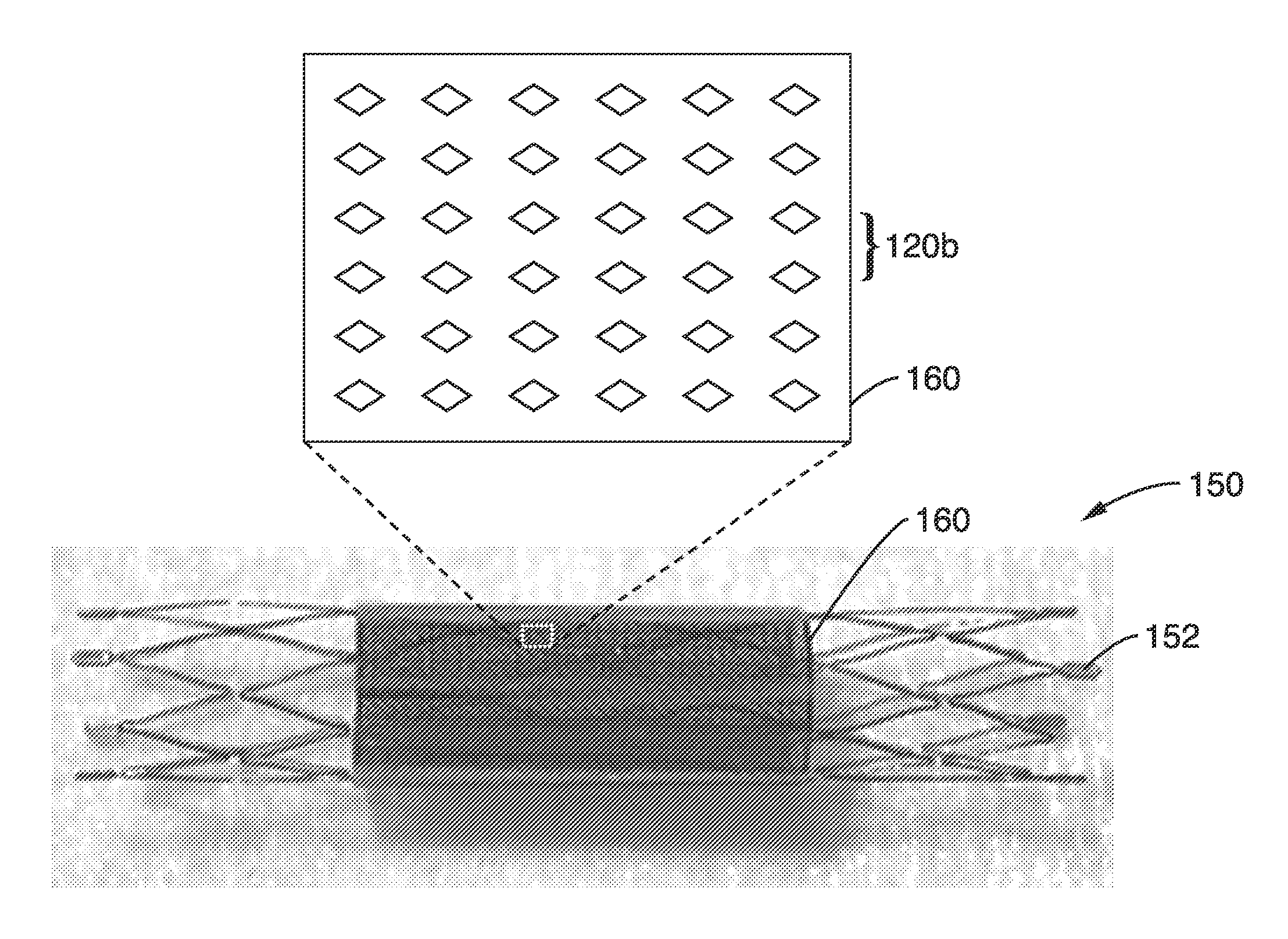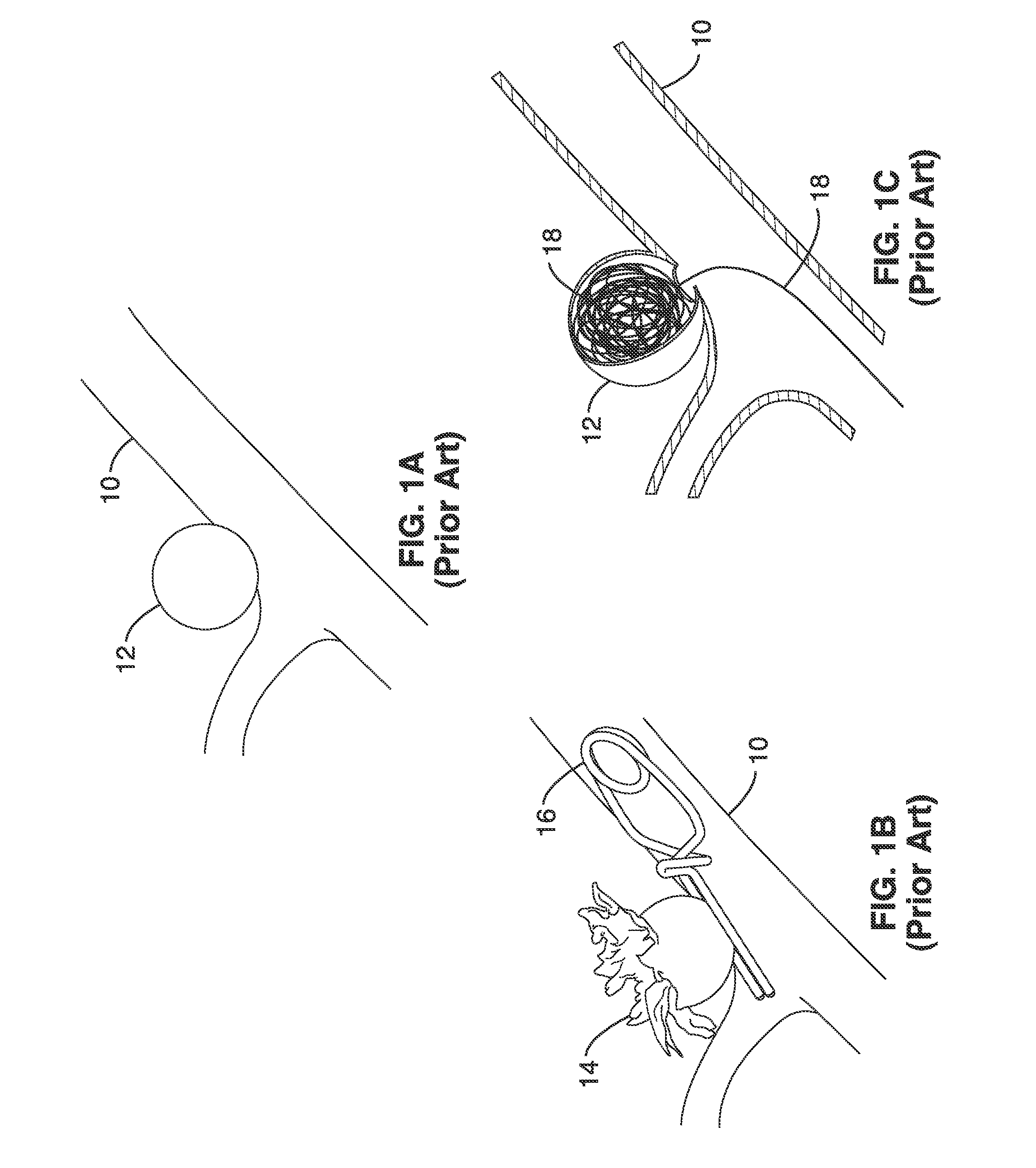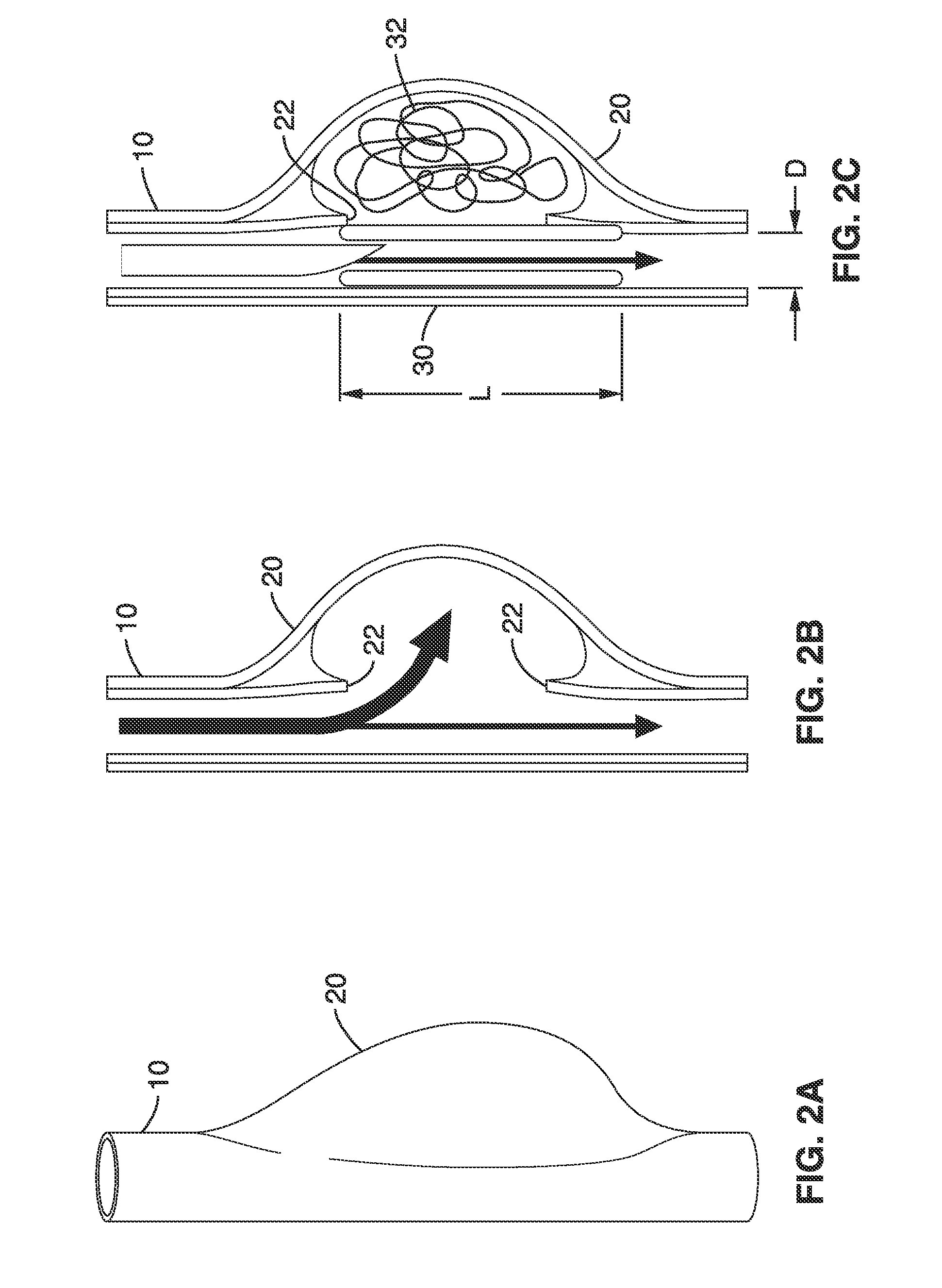Thin film vascular stent and biocompatible surface treatment
a vascular stent and thin film technology, applied in the field of implantable devices, can solve the problems of life-threatening hemorrhage, high morbidity and mortality, and inapplicability of aneurysm rupture, and achieve the effect of more freely bending
- Summary
- Abstract
- Description
- Claims
- Application Information
AI Technical Summary
Benefits of technology
Problems solved by technology
Method used
Image
Examples
embodiment 1
[0285]2. An implant , wherein the super-hydrophilic surface has a water contact angle of less than approximately 5 degrees.
[0286]3. An implant according to embodiment 1, wherein the super-hydrophilic surface is configured to deter platelet adhesion at a rate of less than 3 parts per mm2 when subjected to platelet rich plasma for 3 or more hours.
[0287]4. An implant according to embodiment 1, wherein the hydrophilic surface is fabricated by a method comprising the following: immersion of the thin film in a hydrogen peroxide solution.
embodiment 4
[0288]5. An implant , wherein the method further comprises: passivation of the thin film in a nitric acid solution prior to immersion of the thin film in a hydrogen peroxide solution.
embodiment 5
[0289]6. An implant , wherein the method further comprises: immersion of the thin film in a buffered oxide etchant to eliminate the native oxide layer prior to passivation of the thin film.
PUM
 Login to View More
Login to View More Abstract
Description
Claims
Application Information
 Login to View More
Login to View More - R&D
- Intellectual Property
- Life Sciences
- Materials
- Tech Scout
- Unparalleled Data Quality
- Higher Quality Content
- 60% Fewer Hallucinations
Browse by: Latest US Patents, China's latest patents, Technical Efficacy Thesaurus, Application Domain, Technology Topic, Popular Technical Reports.
© 2025 PatSnap. All rights reserved.Legal|Privacy policy|Modern Slavery Act Transparency Statement|Sitemap|About US| Contact US: help@patsnap.com



